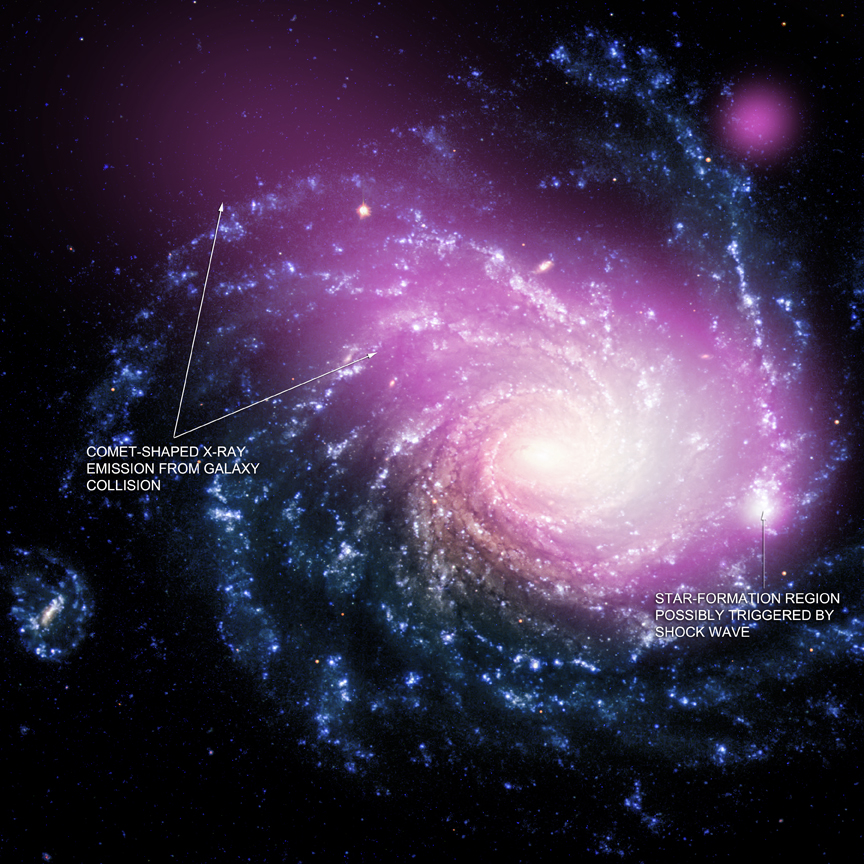
 Credit: X-ray: NASA/CXC/Huntingdon Inst. for X-ray Astronomy/G.Garmire, Optical: ESO/VLT
Credit: X-ray: NASA/CXC/Huntingdon Inst. for X-ray Astronomy/G.Garmire, Optical: ESO/VLT
Pointing to a Cosmic Collision
How often do collisions between galaxies occur on the cosmic superhighway? Sometimes these collisions are caught in the act and can be easily recognized, but even normal-looking galaxies can hide a violent past. The image above shows a composite of optical and X-ray images of a galaxy known as NGC 1232, a rather unassuming spiral galaxy when seen in visual light. But if you use the X-ray vision of the Chandra X-ray Observatory, a comet-shaped cloud of glowing, 6 million degree gas comes into view. This cloud is seen as the purple emission region in the image above. The shape and location of this hot gas is unusual; astronomers think that this cloud is probably the remnant of an energetic collision between NGC 1232 and a smaller dwarf galaxy. If this is correct, then apparently NGC 1232 completely swallowed the dwarf galaxy and its stars. But the violent collision would have produced the superheated cloud of gas visible to Chandra, and may have helped trigger the formation of a cluster of massive stars.
Published: August 26, 2013
<
HEA Dictionary ● Archive
● Search HEAPOW
● Other Languages
● HEAPOW on Facebook
● Download all Images
● Education ● HEAD
>

Each week the HEASARC
brings you new, exciting and beautiful images from X-ray and Gamma ray
astronomy. Check back each week and be sure to check out the HEAPOW archive!
Page Author: Dr. Michael F. Corcoran
Last modified Tuesday, 27-Feb-2024 10:06:49 EST


